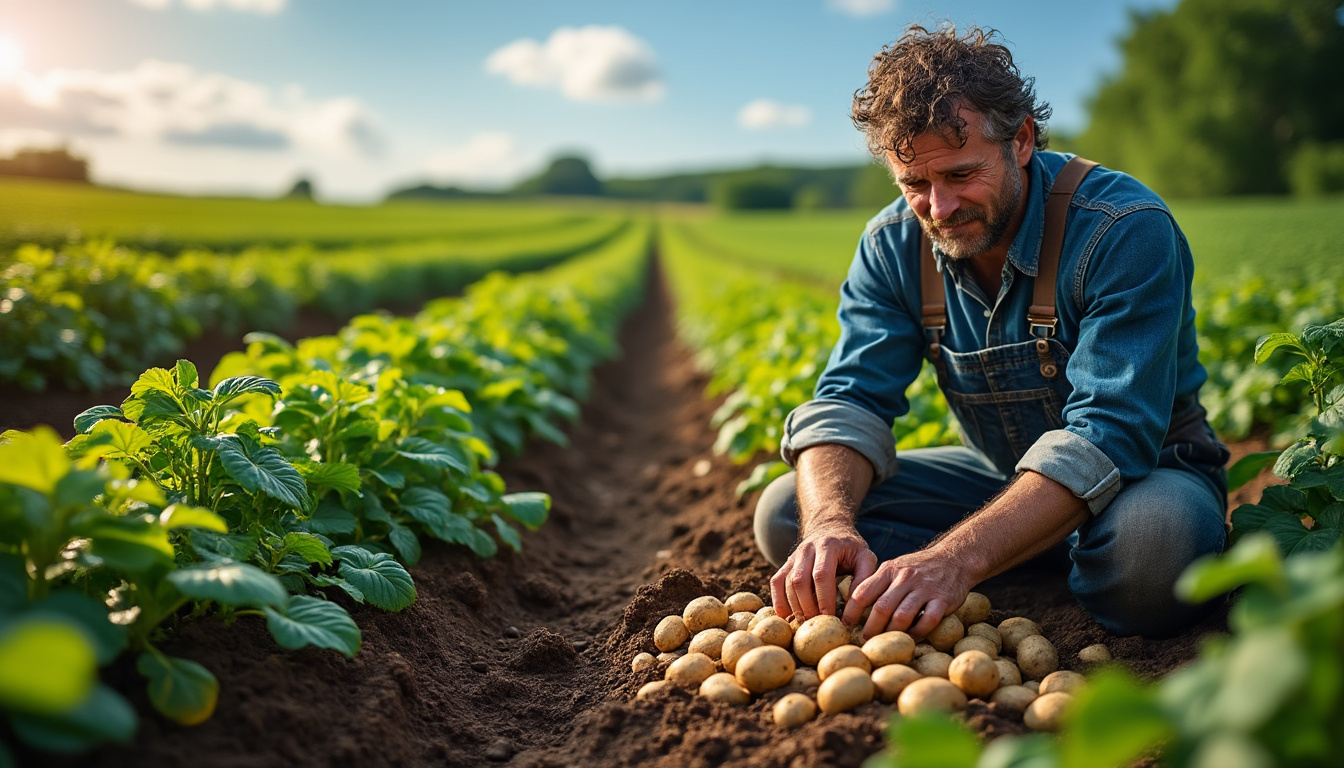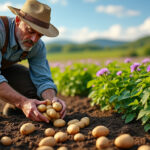Knowing the right time to harvest your potatoes can make a significant difference in your garden’s productivity. In this guide, we’ll cover what to look for when it comes to determining the harvest time for different potato varieties, tips for maximizing your yield, and effective methods for storing your homegrown produce.
- Understanding potato flowering and maturity
- Different potato varieties and their harvest times
- Harvesting techniques for best results
- How to cure and store your potatoes
Understanding Potato Flowering and Maturity
When it comes to potatoes, the flowering of the plant signals that the vine has reached a stage where it can start forming tubers. However, this does not mean that the tubers are ready for harvest just yet. Flowering indicates the plant’s maturity and its readiness to develop new potatoes. To determine when your potatoes are truly ripe, knowing the expected maturity period for the variety you’ve planted is crucial.
If you’re unsure about what varieties you’ve planted, seeds and seed potatoes typically have different growth times. For instance, Yukon Gold, known for its rich flavor, is classified as an early potato that matures within 70 to 90 days. In contrast, late-season varieties, like heirloom fingerlings, can take up to 135 days to reach maturity.
Identifying Readiness for Harvest
Tracking the number of days since planting can help provide a rough estimate of when to start checking for tuber development. For example, if you planted early varieties at the end of March and it’s now late June (about 90 days later), it’s likely time to check on them.
Different Potato Varieties and Their Harvest Times
Each potato variety has specific characteristics that determine when it should be harvested. Here’s a quick overview:
| Variety Type | Days to Maturity | Examples |
|---|---|---|
| First Early | 10 weeks | Arran Pilot, Foremost, Pentland Javelin |
| Second Early | 12-16 weeks | Estima, Marfona, Wilja |
| Main Crop | 16+ weeks | Cara, King Edward, Pink Fir Apple |
Remember, the timing of your harvest will vary based on your regional climate and the specific variety you decide to grow. 🌍
Harvesting Techniques for Best Results
Different types of potatoes require various harvesting techniques for optimal results. For early varieties:
- Gently dig a garden fork beneath the potatoes, lifting them from the soil while maintaining the integrity of the plant.
- For main crop varieties, it’s advisable to remove the stems a couple of weeks before harvesting to allow the skins to toughen up.
By performing these steps, you can ensure not only a successful harvest but also the health of your potato plants. 🌱
How to Cure and Store Your Potatoes
Once harvested, it’s essential to handle your potatoes with care to prolong their freshness. Here’s how:
- Brush off any loose soil; washing is only necessary if grown in sticky clay soil.
- Allow them to cure in a dark place at around 50 to 60°F for about two weeks, which helps harden the skins.
- Store the cured potatoes in a cool, dark, and dry environment, ideally between 35 and 40°F.
Maintaining the right conditions will ensure that your farm-fresh produce remains in excellent condition for several months. If stored correctly, well-cured potatoes can last 7 to 8 months! ❄️🥔
When is the best time to plant roses for optimal growth?
Frequently Asked Questions
Can I Use Harvested Potatoes as Seed Potatoes?
While it’s possible, it’s best to use certified disease-free seed potatoes to avoid potential disease issues in your future crop. Only select the healthiest ones from your harvest.
How Can I Maximize Potato Yield in a Small Space?
Utilizing hilling techniques allows you to grow more potatoes in compact areas. Start by layering compost around your initial seed potatoes and continue adding compost as the plants grow.
What Happens if My Potatoes Start to Turn Green?
Green potatoes may contain harmful compounds. If you notice greening, simply remove that part before cooking. However, always store them in a dark place to prevent this condition. 🕶️
Harvesting your own potatoes is a fulfilling process that connects you with the earth and cycles of nature. With the right knowledge and techniques, you can enjoy a bountiful supply of new potatoes right from your garden! 🌟









